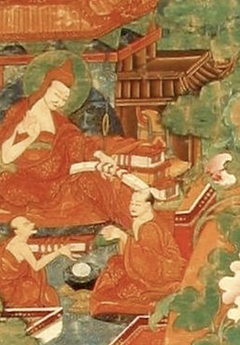Tengyur
English (32) | Deutsch (5) | Español (12) | Français (15) | Português (12) | Italiano (2) | Nederlands (1) | 中文 (1) | བོད་ཡིག (32)
Texts from the Tengyur (bstan 'gyur), the canonical collection of translated treatises (śāstra; bstan bcos):
Abhidharma
by
Nāgārjuna
Middle Way
by
Buddhagupta
by
Nāgārjuna
by
Śāntideva
by
Śāntideva
by
Śāntideva
Miscellaneous
by
Aśvaghoṣa
by
Nāgārjuna
Praise
by
Mātṛceṭa
by
Mātṛceṭa
by
Nāgārjuna
by
Nāgārjuna
by
Nāgārjuna
by
Nāgārjuna
by
Nāgārjuna
by
Vasubandhu
Sūtra Commentaries
by
Śrī Siṃha
Tantra
by
Aśvaghoṣa
by
Candragomin
by
Lakṣmī
by
Tilopa
by
Vajrāyudha
